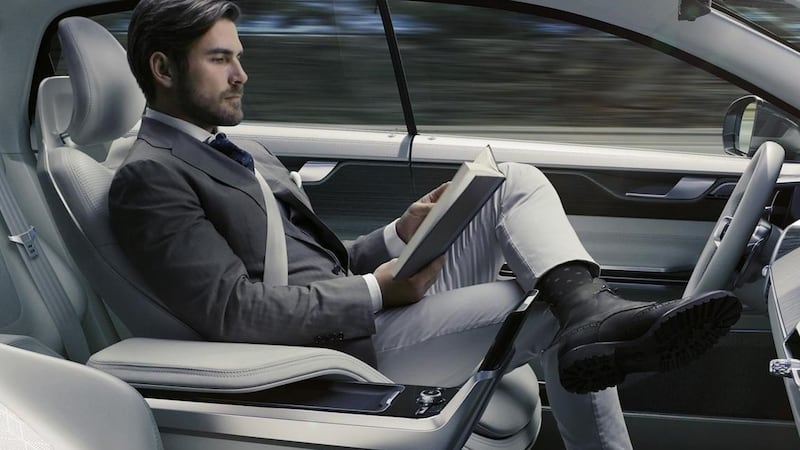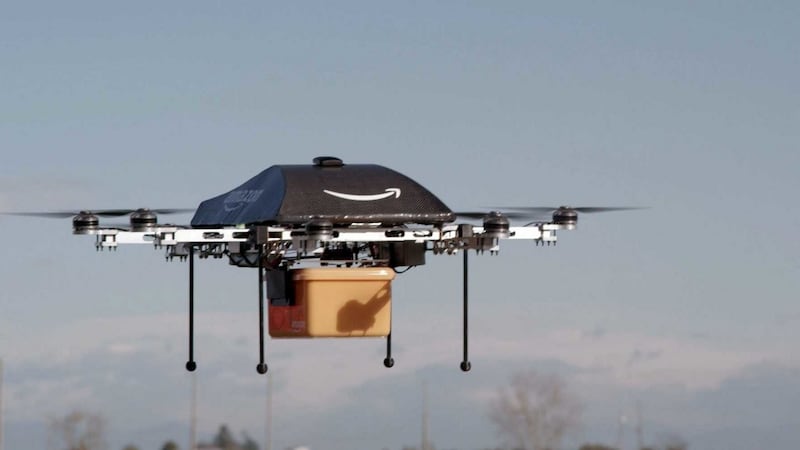Drones and driverless cars look set to have a profound impact on buildings, our cities and the way we get around.
Amazon, for example, floated the idea of using drones for door-to-door deliveries in December 2013, and delivered its first package by drone in 2016 near Cambridge,where it's in advance testing of the concept.
Meanwhile, pilotless drone taxis for humans are not far off either. Kitty Hawk, backed by Google co-founder Larry Page, will seek regulatory approval for its Cora autonomous personal aircraft this year. This uses 12 small rotors to take off – just like a helicopter – while forward thrust comes from a single propellor at the back. It flies at up to 180km/h for about 100km and will likely take on Uber and Airbus in the on-demand personal air transport market.
The technology behind driverless cars, too, is moving close to adoption, with some seeing it being the norm within five years. Many predict driverless cars will disrupt car ownership – people will summon (via an app) a car from ride-hailing companies rather than face the expense of running a car themselves, finding parking, paying for insurance, etc. Driverless cars will bring you from A to B and then move off to their next job.
So, if people are flying to work, goods are being delivered by drone and any vehicles on the roads are for pick-ups and drop-offs, what will this mean for the built environment and the design of new buildings?
Rooftop landing
According to the Elevation documentary by Dezeen, the design magazine, architecture will change dramatically as the ground floor entrance is replaced by rooftop landing, parking and recharging zones, and deliveries arrive via specially constructed portals on the sides of buildings.
In Elevation, starchitect Norman Foster thinks we "could well see the development of aerial highways" due to drones which will relieve pressure on roads as deliveries and human transportation take to the skies.
If driverless cars become the norm and car ownership drops, this could mean that city centre car-parking spaces gradually become obsolete and can be put to alternative use.

David O’Connor, senior lecturer in transport planning and urban design at DIT, has seen “no visible reductions” in the allocation for car-parking in new commercial buildings but “developers are certainly talking about it”.
This is echoed by Marie Hunt, head of research at CBRE, who says developers are starting to discuss how future transportation in cities will be "primarily accounted for" by fleets of electric and autonomous cars and that this "needs to be taken into consideration" when designing buildings today. "The way in which these buildings are designed and ultimately used will be very different to today and we need to plan now and future-proof for this paradigm shift."
O'Connor says there is "no policy framework to facilitate" a reduction in car-parking in Ireland, but points to London, which has zero car-parking requirements for buildings in "PTAL 6" areas (very high public transport accessibility) and "this is showing proper leadership in the area. Recent applications for very extensive parking at Cherrywood suggest there are no such controls in place for Dublin and we remain headed in the wrong direction."
Disruption
In terms of designing buildings with one eye on the future, Hunt says a key point is allowing for buildings that can “easily be adapted for alternative uses” as disruption impacts the market in years to come.
“Incorporating design elements that allow for flexibility, such as generous floor-to-ceiling heights and necessary infrastructure that can ultimately allow conversion to alternative uses, is necessary for all new car-parking facilities being developed from this point forward,” according to Hunt. “Converting existing car parks for alternative uses will be more challenging, and I suspect in most cases they will have to be demolished to allow for alternative uses to be incorporated.”
However, Green Party councillor Ciarán Cuffe says there's lots of "great examples" of multi-storey car parks being converted into "more exciting uses. In Paris, the offices of newspaper Libération were in an old car park with desks placed on a sloping ramp which made for an interesting design challenge. Closer to home, we are converting a significant part of the city council's Drury Street car park into meeting the demand for bike parking."

O’Connor believes “a whole lot of things” can be done to repurpose car parks. “I would start with tactical urbanism, which is another way of saying pop-up, temporary and artistic interventions. Then again, if they have to be taken down and replaced with human-oriented development, that’s no bad thing. They tend to be in areas of high capital value. so it will certainly be economic to do so.”
During the <a class="search" href='javascript:window.parent.actionEventData({$contentId:"7.1213540", $action:"view", $target:"work"})' polopoly:contentid="7.1213540" polopoly:searchtag="tag_organisation">Celtic</a> Tiger people got upset with the amount of helicopters in the skies over Dublin and the consequent noise pollution
The pick-up and drop-off nature of driverless cars could increase the allocation for set-down spaces on city streets. “But there’s never enough loading and set-down space,” says Cuffe. “Currently we’re seeing increased demand for loading with online retail deliveries. I suspect self-driving cars may increase this demand, and we may have to make changes in our development plans to accommodate this radical shift.”
Kerb space
Hunt says designers and planners “need to prioritise” the incorporation of sufficient kerb space to allow for safe and efficient drop-offs and deliveries as the move towards autonomous cars increases. “Providing sufficient charging points for electric cars will also become increasingly topical,” she says.
However, O’Connor points out that the idea that everyone will be able to pitch up to every building for every trip “will never be viable and should not be entertained”. He says cities “will always need” to plan for pedestrians, cyclists and public transport. “Even with the onset of autonomous vehicles, which threaten to dominate and repress the public domain, the car is an inefficient use of space and its use in urban areas, which are constrained, will have to be managed,” he concludes.
As for drone taxis, Cuffe says they may be best suited to "skyscraper cities" such as Dubai or São Paulo. "In Dublin, I'd see issues around aviation safety and noise. During the Celtic Tiger people got upset with the amount of helicopters in the skies over Dublin and the consequent noise pollution. No doubt any proposal for air taxis will see people equally annoyed. I'd be cautious about the transport requirements of the 1 per cent dominating the city's skyline."
O’Connor suggests that the rise of drones means cities and local authorities may have to become competent in air traffic control, “something that has traditionally been outside of their jurisdiction.”












